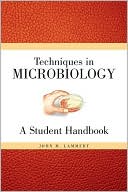Category Books
- Fiction Books & Literature
- Graphic Novels
- Horror
- Mystery & Crime
- Poetry
- Romance Books
- Science Fiction & Fantasy
- Thrillers
- Westerns
- Ages 0-2
- Ages 3-5
- Ages 6-8
- Ages 9-12
- Teens
- Children's Books
- African Americans
- Antiques & Collectibles
- Art, Architecture & Photography
- Bibles & Bible Studies
- Biography
- Business Books
- Christianity
- Computer Books & Technology Books
- Cookbooks, Food & Wine
- Crafts & Hobbies Books
- Education & Teaching
- Engineering
- Entertainment
- Foreign Languages
- Game Books
- Gay & Lesbian
- Health Books, Diet & Fitness Books
- History
- Home & Garden
- Humor Books
- Judaism & Judaica
- Law
- Medical Books
- New Age & Spirituality
- Nonfiction
- Parenting & Family
- Pets
- Philosophy
- Political Books & Current Events Books
- Psychology & Psychotherapy
- Reference
- Religion Books
- Science & Nature
- Self Improvement
- Sex & Relationships
- Social Sciences
- Sports & Adventure
- Study Guides & Test Prep
- Travel
- True Crime
- Weddings
- Women's Studies
Techniques for Microbiology: A Student Handbook » (1st Edition)

Authors: John M. Lammert
ISBN-13: 9780132240116, ISBN-10: 0132240114
Format: Paperback
Publisher: Benjamin Cummings
Date Published: October 2006
Edition: 1st Edition
Author Biography: John M. Lammert
Book Synopsis
This vivid, full-color laboratory techniques handbook is an instructive, concise, graphical presentation of the skills and techniques required in an introductory microbiology lab. Clear visual instructions enable readers to carry out fundamental manipulations and procedures effectively and safely. Demonstrates those techniques that will be used frequently for studying microbes in the laboratory. Has a safety section and frequent safety cautions throughout. Has a convenient, portable 6” x 9” trim size, a spiral binding and soft cover, making it ideal for use on the lab bench surface. It is priced inexpensively so that it will be suitable as a supplement to an in-house or commercial manual. Companion to any introductory laboratory whether for biology majors or allied health majors.
Table of Contents
Unit I — Safety first!
Safety in the microbiology laboratory
Universal precautions
Unit II — Culturing bacteria and aseptic techniques
Preparing culture media
Sterilization
The autoclave
Dry heat
Aseptic transfer of bacteria
Adjusting the gas burner
Preparing bacterial cultures in broth tubes and on agar slants
Transfer colony from plate to broth and to agar slant
Isolation of bacteria
Preparing a pour plate
Preparing a streak plate
Preparing a spread plate
Characteristic features of bacterial growth in broth and on agar
Maintenance and storage of stock cultures
Culturing anaerobic bacteria
Unit III — Visualizing bacteria
Effective use and responsible care of the light microscope
Measuring microscopic cells
Preparing a hanging-drop slide
Preparing a bacterial smear
Preparing a simple stain
Preparing a Gram stain
Preparing an acid-fast stain
Preparing a negative stain
Preparing a capsule stain
Preparing an endospore stain
Unit IV — Enzyme-based tests for the identification of bacteria
Hydrolytic (digestive) enzymes
Starch hydrolysis
Casein hydrolysis
Gelatin hydrolysis
Lipid hydrolysis (tributyrin and spirit blue agar)
DNA hydrolysis
Utilization of carbohydrates
Fermentation of carbohydrates (Durham tube)
Methyl red test (mixed fermentation)
Voges-Proskauer test (butanediol fermentation)
Citrate utilization
Oxidation-fermentation (O-F) glucose test
Degradation of amino acids
Indole test
H2S production
Phenylalanine deamination
Decarboxylase test
Respiration tests
Catalase test
Oxidase test
Nitrate reduction
Miscellaneous tests
Triple sugar iron (TSI) test
Urea hydrolysis
Litmus milk reactions
Motility assay
Coagulase production
Selective and/or differential media
Blood agar
Eosin methylene blue (EMB) agar
Mannitol-salt agar
MacConkey agar
Phenylethyl alcohol (PEA) agar
Unit V — Counting microbes
Direct microscopic counting with the Petroff-Hausser chamber
Preparing a standard plate count of bacteria
Using Turbidemetry to estimate cell density
Plaque assay for determining bacteriophage titer
Unit VI — Measuring effectiveness of antibacterial chemicals
Kirby-Bauer method for sensitivity of bacteria to antibacterial
medicines
Evaluating antibacterial chemicals: The disk-diffusion
method
Subjects
 Medicine
Medicine  Basic Sciences
Basic SciencesMedical Books
 Medicine
Medicine  Reference - Medicine
Reference - MedicineScience & Nature
 Biology
Biology  Biology - Microbiology
Biology - MicrobiologyScience & Nature
 Biology
Biology  Biology - Molecular Biology
Biology - Molecular BiologyScience & Nature
 Reference & Textbooks
Reference & Textbooks  Science Laboratory Manuals
Science Laboratory ManualsScience & Nature
 Reference & Textbooks
Reference & Textbooks  Science Reference - General & Miscellaneous
Science Reference - General & MiscellaneousScience & Nature
 All Science & Nature
All Science & Nature  Biology & Life Sciences
Biology & Life SciencesScience & Nature
 All Science & Nature
All Science & Nature  Science Reference
Science ReferenceNonfiction
 Medicine
Medicine  Medicine
MedicineNonfiction
 Science & Nature
Science & Nature  Biology
BiologyNonfiction
 Science & Nature
Science & Nature  Reference & Textbooks
Reference & TextbooksNonfiction
 Science & Nature
Science & Nature  All Science & Nature
All Science & Nature
